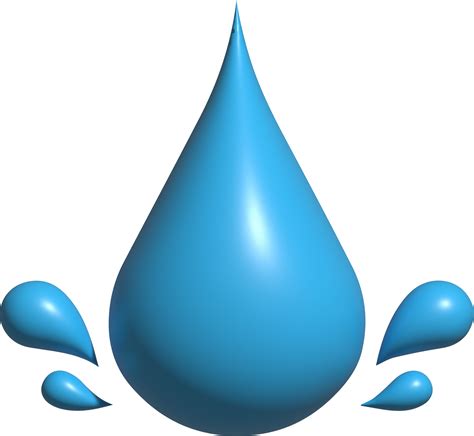A Comprehensive Guide to Understanding the Relationship Between Drops and Milliliters
Determining the number of drops in one milliliter (mL) is crucial for various scientific and practical applications. Whether you're a biologist preparing solutions, a baker measuring ingredients, or a medical professional administering medication, understanding this conversion is essential. This article will delve into the intricacies of drops and milliliters, providing valuable information to enhance your knowledge and precision.
Defining Drops and Milliliters
A drop is a small, rounded volume of liquid that forms when it is suspended from a surface. The size of a drop can vary depending on factors such as the liquid's viscosity, surface tension, and the diameter of the dispensing orifice.
A milliliter (mL) is a metric unit of volume equal to one-thousandth of a liter (1 mL = 0.001 L). It is commonly used to measure small volumes of liquids.
Calculating the Number of Drops in One Milliliter
The exact number of drops in one milliliter depends on the liquid in question. However, a general estimate can be made using the following formula:

Number of Drops = Volume of Liquid (mL) / Drop Volume

To determine the drop volume, you can use a dropper or pipette calibrated to dispense known volumes of liquid. Alternatively, you can conduct an experiment to measure the volume of a single drop.

Factors Affecting Drop Volume
Several factors can influence the volume of a drop, including:
-
Liquid Viscosity: More viscous liquids, such as honey or oil, produce larger drops than less viscous liquids, such as water or alcohol.
-
Surface Tension: Liquids with higher surface tension, such as water, form smaller drops than liquids with lower surface tension, such as oil.
-
Orifice Diameter: The diameter of the dispensing orifice affects the drop size. Smaller orifices produce smaller drops.
-
Height of Liquid: The distance between the liquid surface and the dispensing orifice can also influence the drop volume.
Common Drop Volumes for Various Liquids
The following table provides approximate drop volumes for common liquids:
| Liquid |
Drop Volume (μL) |
| Water |
50 |
| Alcohol |
30 |
| Glycerin |
80 |
| Honey |
120 |
| Vegetable Oil |
40 |
Applications of the Drop-to-Milliliter Conversion
Understanding the relationship between drops and milliliters has numerous applications across various fields:
-
Biology: Preparing solutions for cell culture, microscopy, and biochemical assays.
-
Pharmacology: Accurately administering medication in liquid form.
-
Cooking: Measuring precise amounts of liquids in baking and cooking recipes.
-
Chemical analysis: Diluting samples and determining concentrations.
-
Environmental monitoring: Collecting and analyzing water samples for contamination testing.
Effective Strategies for Measuring Drops
- Use a calibrated dropper or pipette to ensure accurate and reproducible drop volumes.
-
Experimentally determine the drop volume for the specific liquid you are using.
-
Control the height of the liquid above the dispensing orifice to minimize variability in drop size.
-
Use a liquid with known viscosity and surface tension to ensure consistency in drop formation.
Tips and Tricks
- If you don't have a calibrated dropper or pipette, you can use a syringe to measure the volume of a drop.
- To minimize evaporation when measuring drops, use a covered container or dispense the drops into a small dish.
-
Stir the liquid before using it to ensure the viscosity is uniform.
-
Clean the dropper or pipette regularly to prevent contamination and ensure accurate dispensing.
Common Mistakes to Avoid
-
Assuming that all drops are the same size: Drop volume can vary significantly depending on the liquid and dispensing conditions.
-
Using an inaccurate or uncalibrated dropper or pipette: Incorrect measurements can lead to errors in experiments or medication administration.
-
Not accounting for evaporation: Evaporation can reduce the drop volume, especially for volatile liquids.
-
Ignoring the height of the liquid: The height of the liquid can affect the drop size and should be kept constant during dispensing.
Step-by-Step Approach to Measuring Drops
-
Gather your materials: Calibrated dropper or pipette, liquid sample, and a small dish (optional).
-
Prepare the liquid: Stir the liquid to ensure uniform viscosity and minimize evaporation.
-
Calibrate the dropper or pipette: If necessary, determine the drop volume for the specific liquid and dispensing conditions.
-
Dispense the drops: Hold the dropper or pipette vertically above the dish (if using) and dispense the desired number of drops.
-
Measure the volume of the drops: If needed, use a syringe to measure the total volume of the dispensed drops.
Conclusion
Understanding the relationship between drops and milliliters is essential for accurate measurement and precise dispensing of liquids. By considering the factors that affect drop volume and employing effective strategies, you can ensure accurate and reliable results in your work or experiments.

